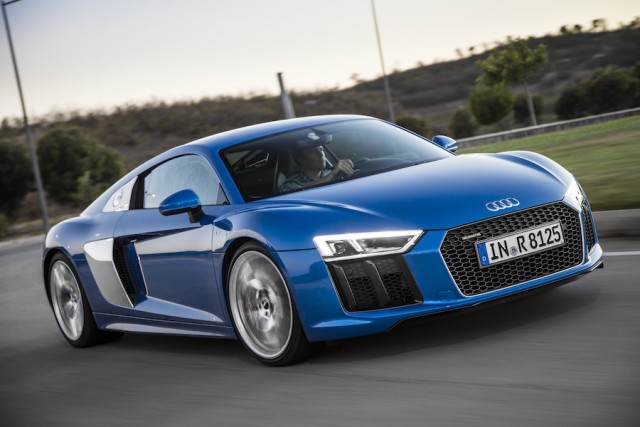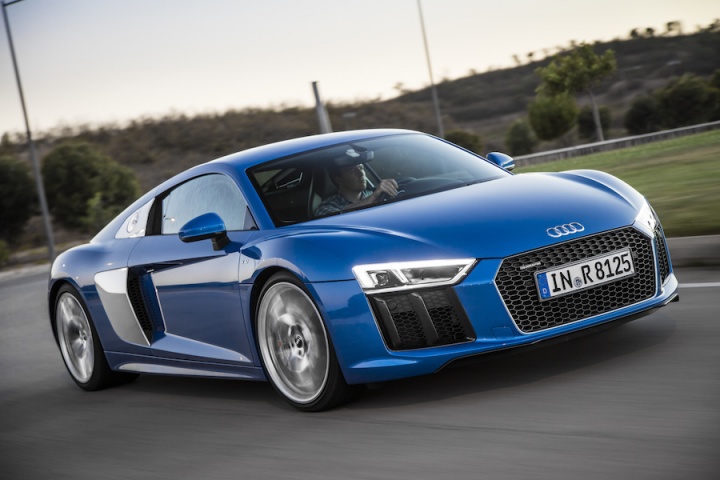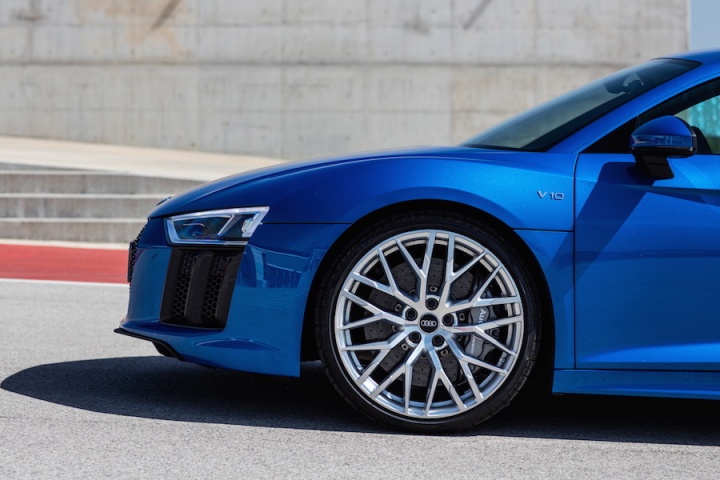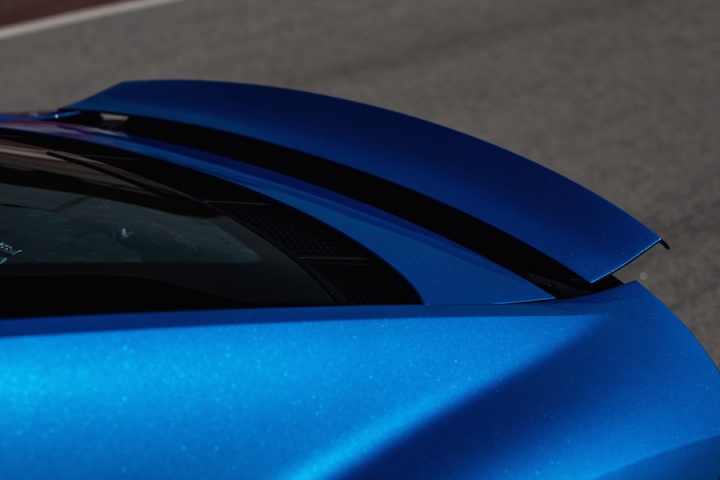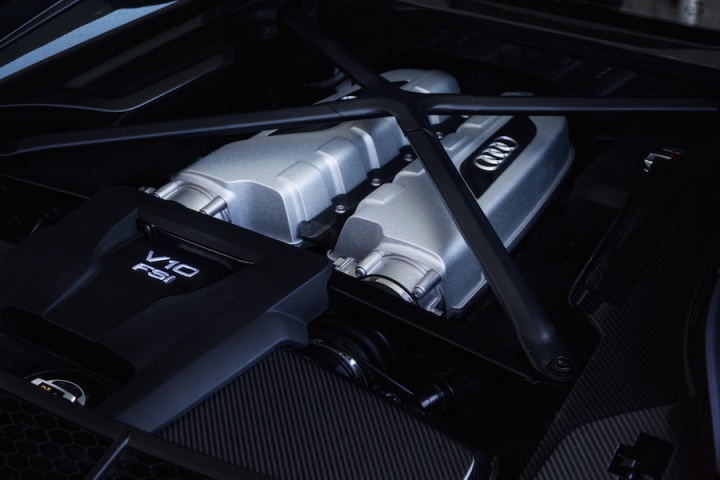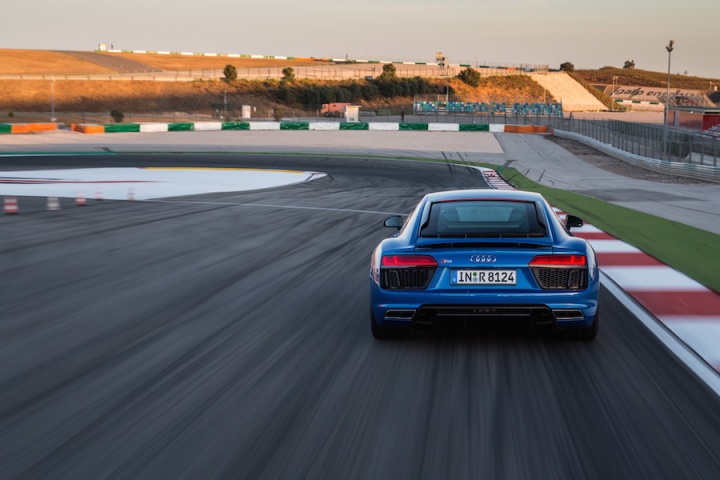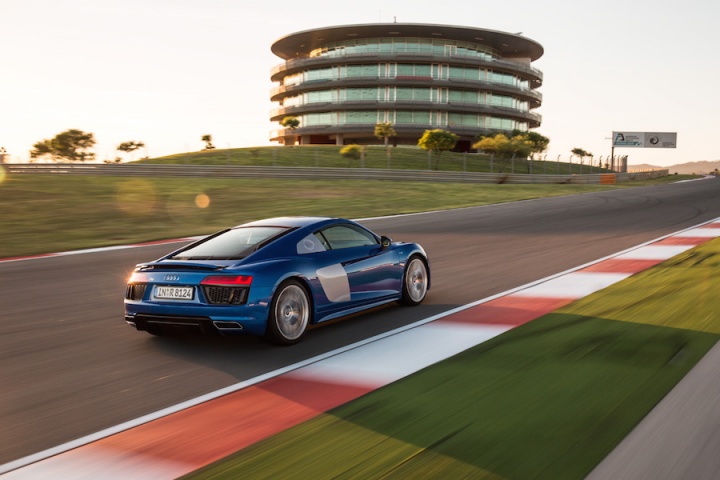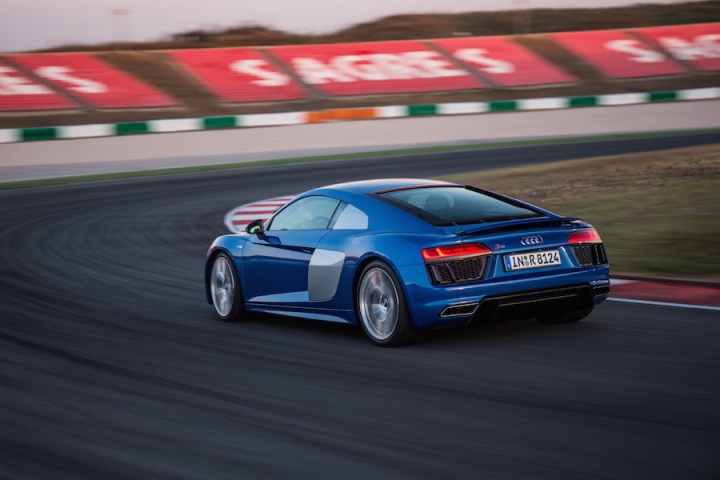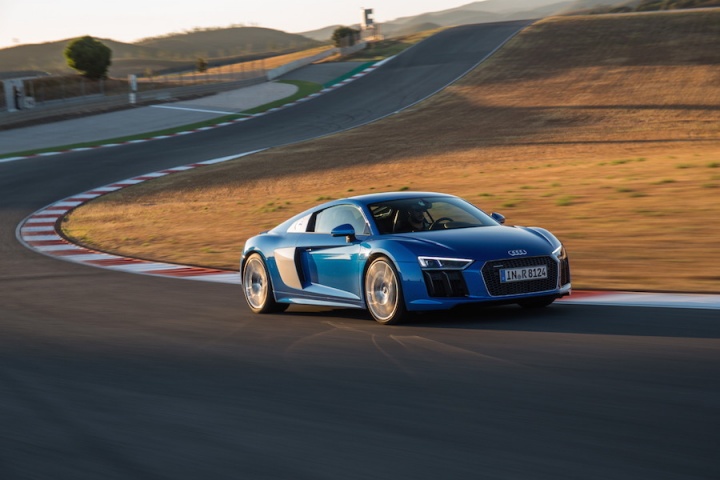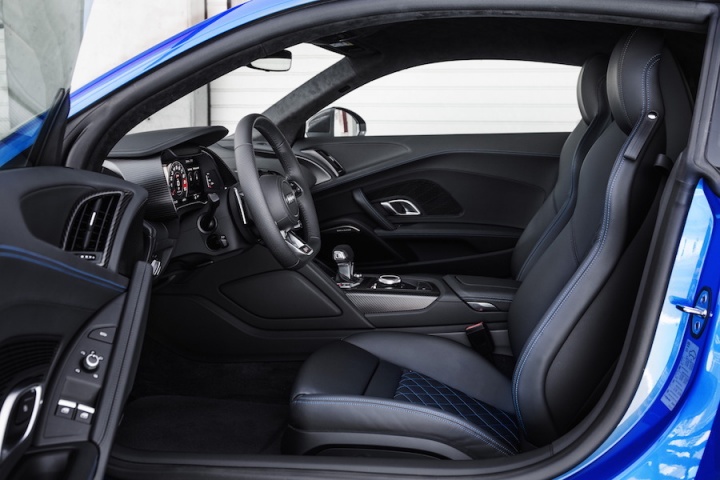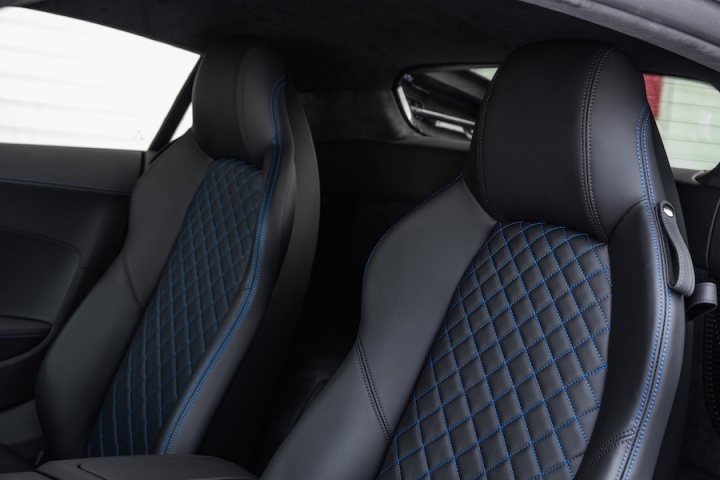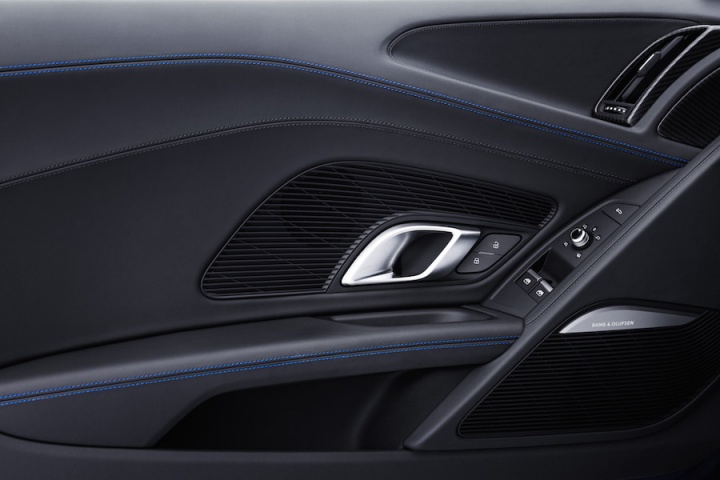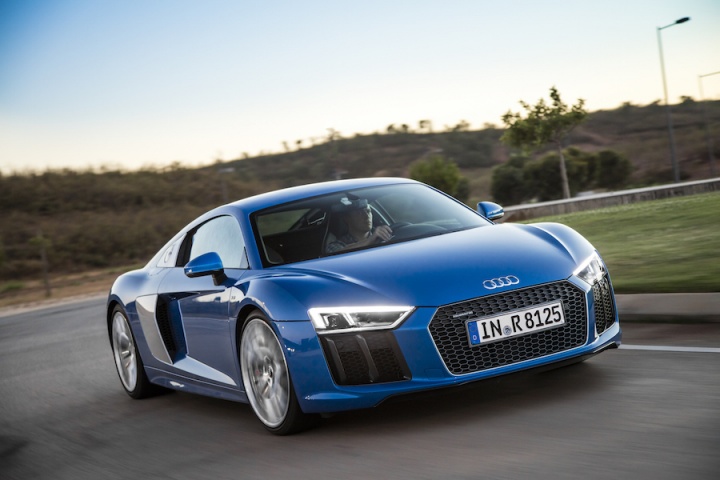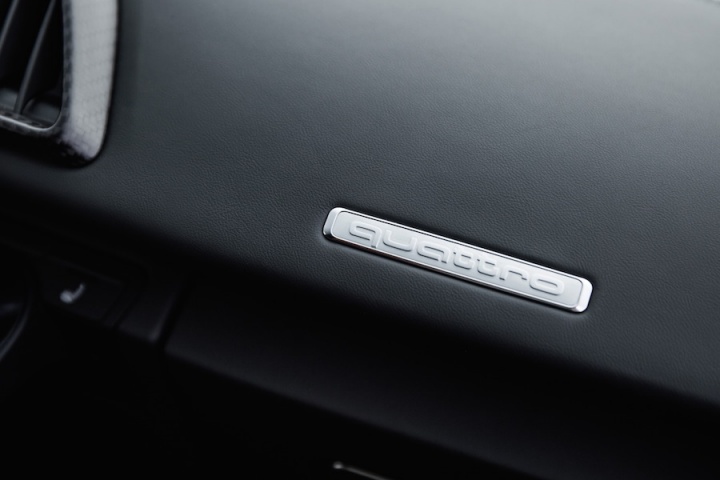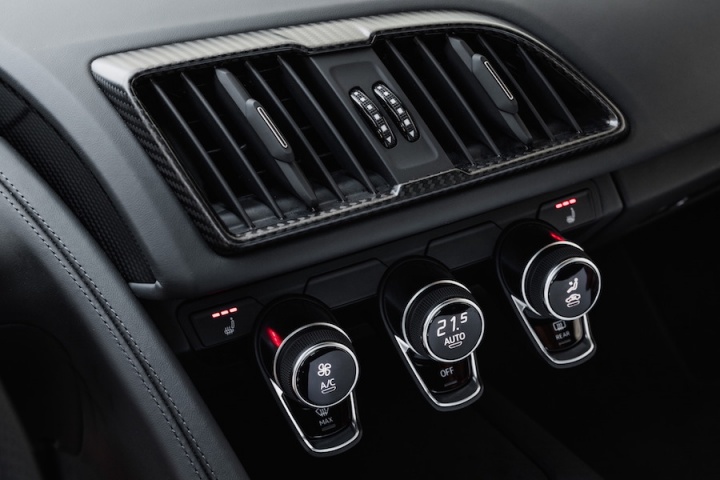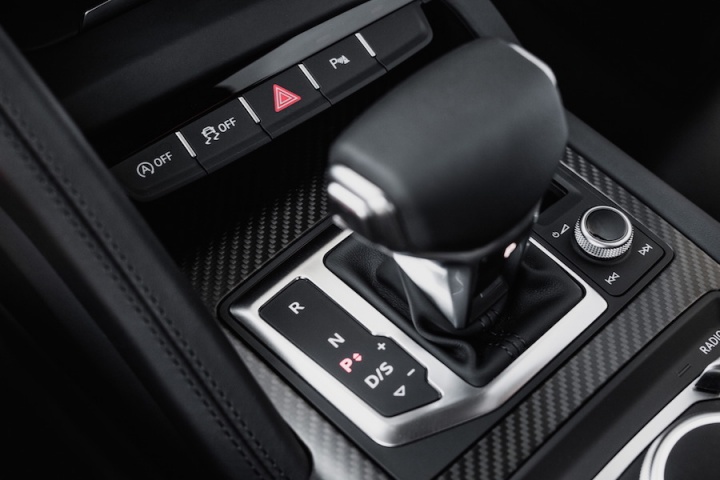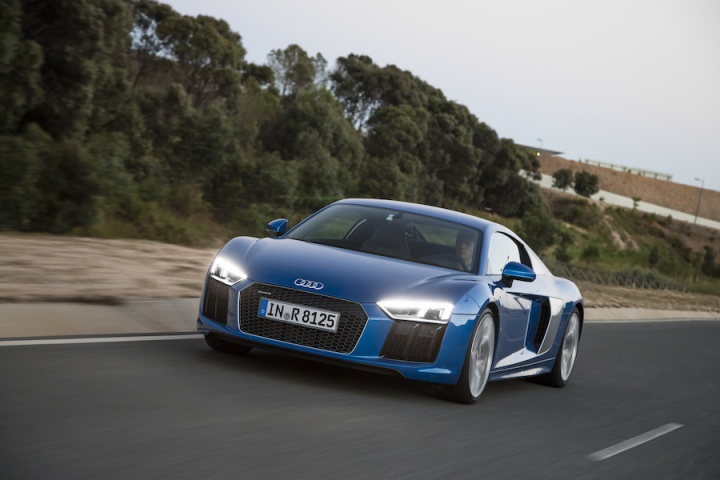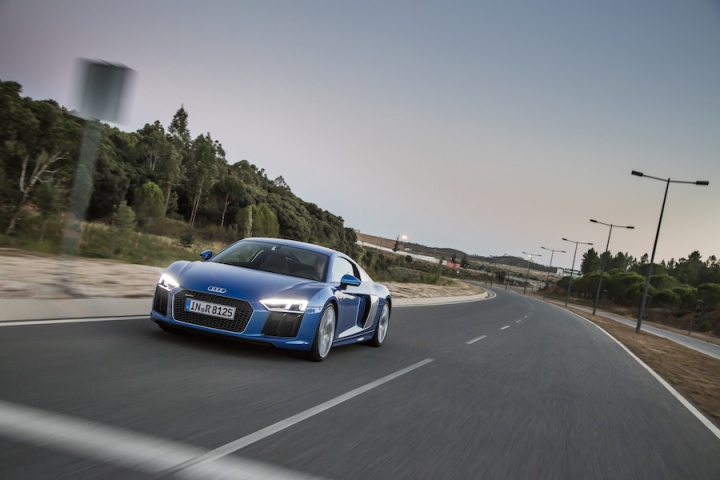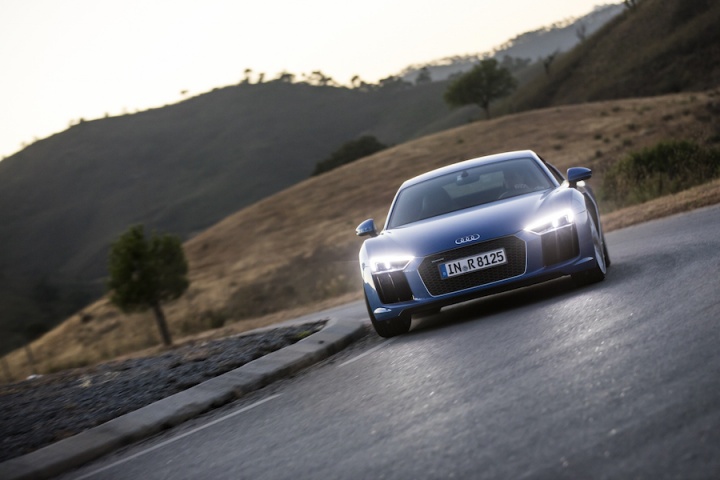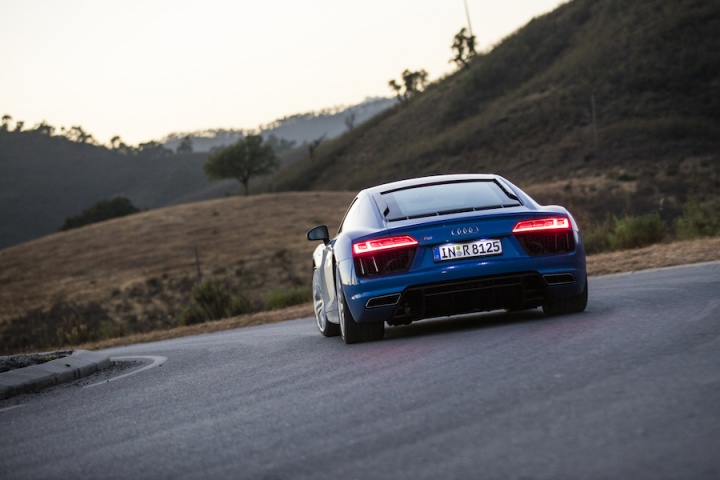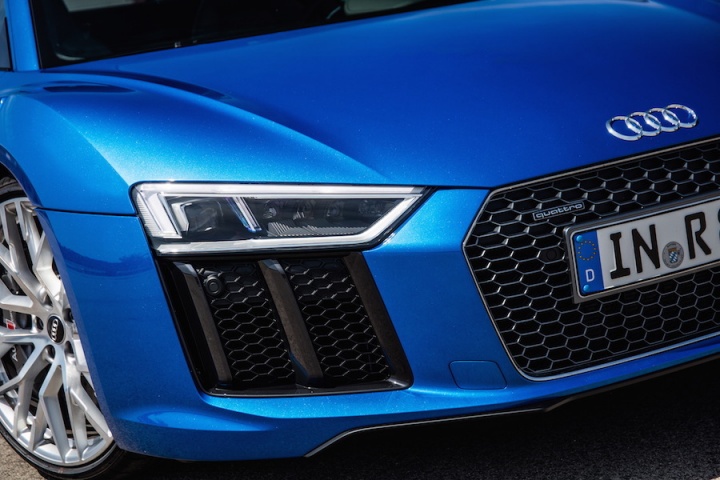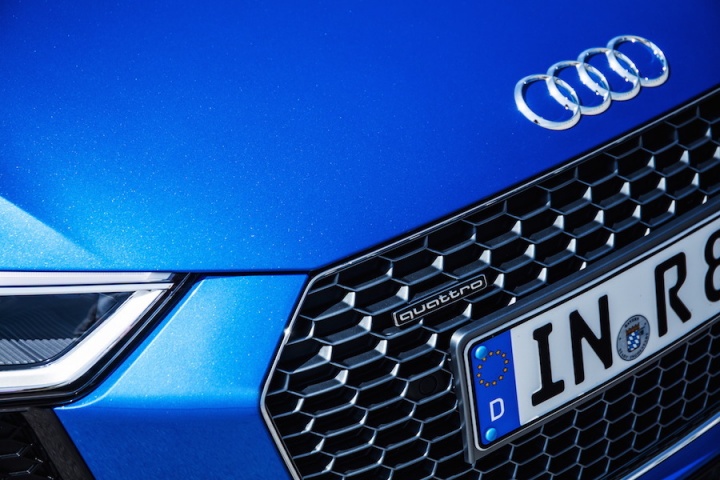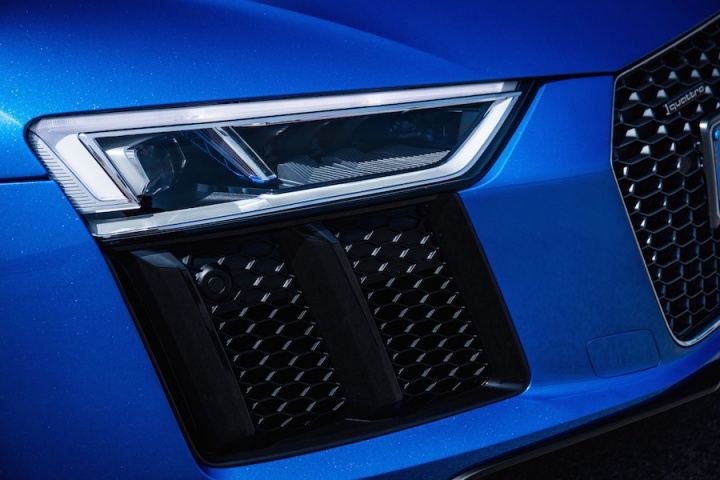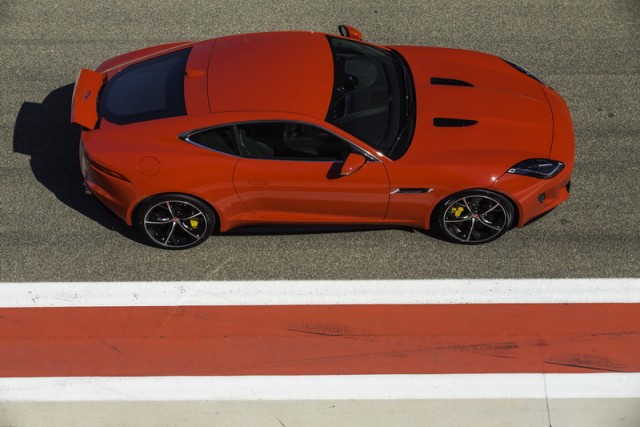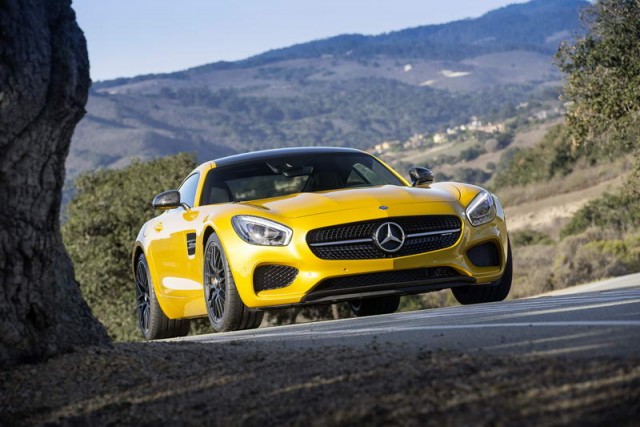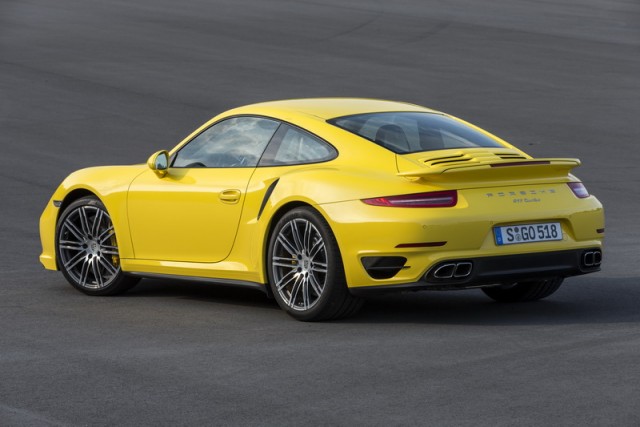The new Audi R8 may appear very similar to the car it replaces, but it's a completely new vehicle, lighter, faster, of better quality and, somewhat surprisingly, even better to drive. The entry-level version is now powered by a 540hp V10 engine that is anything but 'entry-level'. This is a supercar by any measure and also, a super car.
In the metal
Audi got the R8 shape right first time out and you can't blame it for not wanting to start again for the second generation. However, while the new R8 appears little different to its predecessor at a glance, spend some time with the new car and you begin to appreciate how the designers have brought the shape bang up to date, without losing the core concept of the R8's look. Details that stand out for us include the new split 'sideblade' design, a wide wide wide rear end with lots of crisp chamfers, wheelarch-filling alloys and a front grille that's surprisingly three dimensional and detailed. This car has serious stance and road presence too. In spite of the evolutionary design, the new Audi R8 features a brand new body and chassis. It's now made from a combination of aluminium and carbon fibre (it was just aluminium before) and it's 40 per cent stiffer and 15 per cent lighter. The overall weight of the car has reduced by 50kg to 1,595kg and the centre of gravity has lowered a tad too.
The interior is more obviously different to the previous R8's and not just because it features Audi's wonderful Virtual Cockpit. That does allow for more freedom in the design of the rest of the dashboard, which looks unlike anything else from the Audi stable. It's incredibly driver-centric, as it should be, and the quality is top notch. The test cars in Portugal were finished with tasteful black leather sports seats and contrast blue stitching to match the exterior colour. It's a classy theme, though we could do without the optional quilted Alcantara headliner. The electrically adjusted leather sports seats might be a little slim for some, but they offer a great blend of comfort and support and visibility isn't too bad. The R8 isn't very practical though, with a small 112-litre 'boot' up front and a shelf behind the seats that apparently holds 226 litres - or a set of golf clubs. Large suitcases are a no-no.
Arguably, the most important aspect of the cabin is the new steering wheel. It's a chunky leather flat-bottomed affair that's festooned with buttons. Along with those that control the Virtual Cockpit and infotainment, the R8's wheel houses several circular buttons and switches that hint at the car's motorsport heritage. Drive select is prominent and the engine start button is a large red circle. There are more in the V10 plus model that can be optionally added to the regular V10 car, but we won't go into those here.
Driving it
The V10 engine defines the new Audi R8. It's one of the last naturally aspirated units of its type in production and it's simply astounding. The performance figures shown above are impressive by any measure, but it's the way that those numbers are delivered that sets the R8 apart. From low revs there's a guttural roar from the V10, rising in pitch to a crescendo at the 8,700rpm redline. In between there are various different melodic sounds from the exhaust that'll have you changing gear at different revs just for the sake of it. The R8 has the ability to scare a passenger with its pace up to about 6,000rpm and then you realise there's another 2,000rpm or so before it hits peak power. At that point in the rev counter the R8's rate of acceleration seems to take a step up and it's all too easy to be at a crazy fast speed in a very short amount of time. The public road certainly isn't enough to experience this car's performance in full.
Full-bore acceleration in the R8 V10 is astounding by any measure, but standing starts are effortless thanks to the quattro four-wheel drive system. The all-wheel drive hardware is new as well, with more sophistication and ability, meaning that 100 per cent of the engine output can be sent front or rear depending on traction requirements. By default there's about 60 per cent to the rear, which gives the R8 a delicately balanced feel on the exit of corners, but it's not as easy to make it oversteer (i.e. drift) as its predecessor. It rewards smooth inputs though the direct steering. Those that relish the challenge of a powerful rear-drive chassis may be a small bit disappointed by the R8's competence, but it's far from inert, and if you push it hard it moves around a surprising amount - on road or track. On a tortuously twisty and bumpy road section, it certainly felt as engaging to drive as any of its rivals would, with the added security of the four-wheel drive system. It'd really come into its own when the weather turns foul, but it's difficult at this stage to judge how comfortable the R8 will be on Irish roads, as the test cars were weighed down with options, including larger than standard alloy wheels and magnetic ride adaptive damping. So-equipped, we found the car firm, but never unrefined.
We have mixed emotions about the R8's gearbox. Gone is the mechanical-feeling manual option of before (which we loved) and now all R8s come with a seven-speed S tronic automatic as standard. It's a dual-clutch design and it's difficult not to be impressed by its mixture of speed and smoothness. The way it slots home the next ratio in a virtually seamless fashion, even on full throttle, is astounding. Through the drive select system, the shift speed can be increased further and we can't help but love the gratuitous automatic throttle blip on down-changes. It's a technical marvel, there's no doubt, but, and this may sound harsh, we wonder if it's too good, doing all the work for the driver and removing a layer of interactivity. Still, it does ensure that the R8 remains stable no matter when you change gear, so there's no fear in upsetting the car's composure mid-corner by changing up, for example. Just brilliant.
What you get for your money
This standard V10 model starts at €231,500, set to compete with the Porsche 911 Turbo. Standard specification will be very generous, including full LED lights all-round (including the eye-catching 'Dynamic' rear indicators), Virtual Cockpit with satnav, leather seats and climate control. Tempting options will include laser headlights (likely to be standard on the V10 plus model) and magnetic ride adaptive damping.
It's worth noting that there are no plans whatsoever to offer a manual model, though there will be an all-electric R8 e-tron variant. Debate rages within Audi AG as to whether there should be another smaller engined version to sit below the V10 to replace the V8 of old, but it would have to be a boosted unit - either the current V6 or the twin-turbocharged V8 that sees service in the Audi RS 6 Avant. Our money is on a 3.0-litre V6, to pander to the Chinese market, which heavily penalises engines of more than 3.0-litre capacity.
Verdict
The Audi R8 hardly dated, yet this new one instantly puts its predecessor in the shade. It's cracking looking, has a much more special interior, an epic engine that loves to rev and a competent chassis that still lets you feel like you're in control every now and then. To top all that it's actually a better car than the Lamborghini it shares much of its underpinnings with. Very special.

